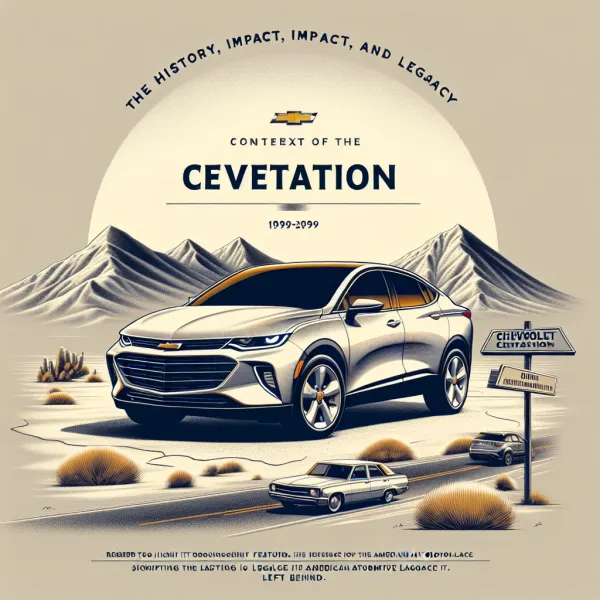The Chevrolet Citation: A Revolutionary Compact Car with a Complex Legacy
The Chevrolet Citation: A Revolutionary Compact Car with a Complex Legacy
In the late 1970s, the American automotive industry faced a seismic shift. Rising fuel prices, increasing competition from Japanese automakers, and changing consumer preferences forced U.S. manufacturers to rethink their strategies. Enter the Chevrolet Citation, a car that promised to revolutionize the compact car market and lead General Motors into a new era.
The Birth of the Chevrolet Citation
Introduced in 1980, the Chevrolet Citation was GM's first front-wheel-drive compact car. Built on the innovative X-body platform, the Citation was designed to offer a spacious interior, improved fuel efficiency, and a modern driving experience. It was a bold departure from the traditional rear-wheel-drive sedans that had dominated the American market for decades.
The Citation came in three body styles: a two-door coupe, a four-door sedan, and a five-door hatchback. Its design was practical yet forward-thinking, with a focus on maximizing interior space while maintaining a compact exterior footprint. Chevrolet marketed the Citation as a car that could do it all—offering the comfort of a larger vehicle with the efficiency of a smaller one.
Initial Success and Popularity
Upon its release, the Chevrolet Citation was met with enthusiasm. It was named Motor Trend's Car of the Year in 1980, and its sales figures reflected its initial popularity. In its first year alone, Chevrolet sold over 800,000 units, making it one of the best-selling cars in America at the time.
The Chevrolet Citation was a car ahead of its time, designed to meet the needs of a changing automotive landscape.
Consumers were drawn to its combination of practicality, affordability, and modern features. The front-wheel-drive layout provided better traction in poor weather conditions, and its fuel-efficient engines appealed to drivers looking to save money at the pump.
The Downfall: Quality Issues and Controversy
Despite its strong start, the Chevrolet Citation's reputation quickly began to falter. Reports of quality control issues and mechanical problems started to surface. Owners complained about brake failures, transmission issues, and premature rusting. These problems tarnished the car's image and led to a series of recalls.
Additionally, the Citation became embroiled in controversy when it was revealed that GM had allegedly manipulated EPA fuel economy tests to make the car appear more efficient than it actually was. This scandal further eroded consumer trust and damaged the car's reputation.
The Legacy of the Chevrolet Citation
Production of the Chevrolet Citation ended in 1985, marking the end of a tumultuous chapter in GM's history. While the car's innovative design and initial success cannot be overlooked, its legacy is ultimately overshadowed by its quality issues and controversies.
However, the Citation's impact on the automotive industry is undeniable. It paved the way for future front-wheel-drive vehicles and demonstrated the potential of compact cars in the American market. Despite its flaws, the Chevrolet Citation remains a fascinating case study in automotive history—a car that aimed high but fell short of its lofty ambitions.
Conclusion
The Chevrolet Citation is a reminder of the challenges and risks involved in innovation. While it may not have lived up to its promise, it played a crucial role in shaping the direction of the American automotive industry. For better or worse, the Citation's story is one of ambition, innovation, and the complexities of meeting consumer expectations.
